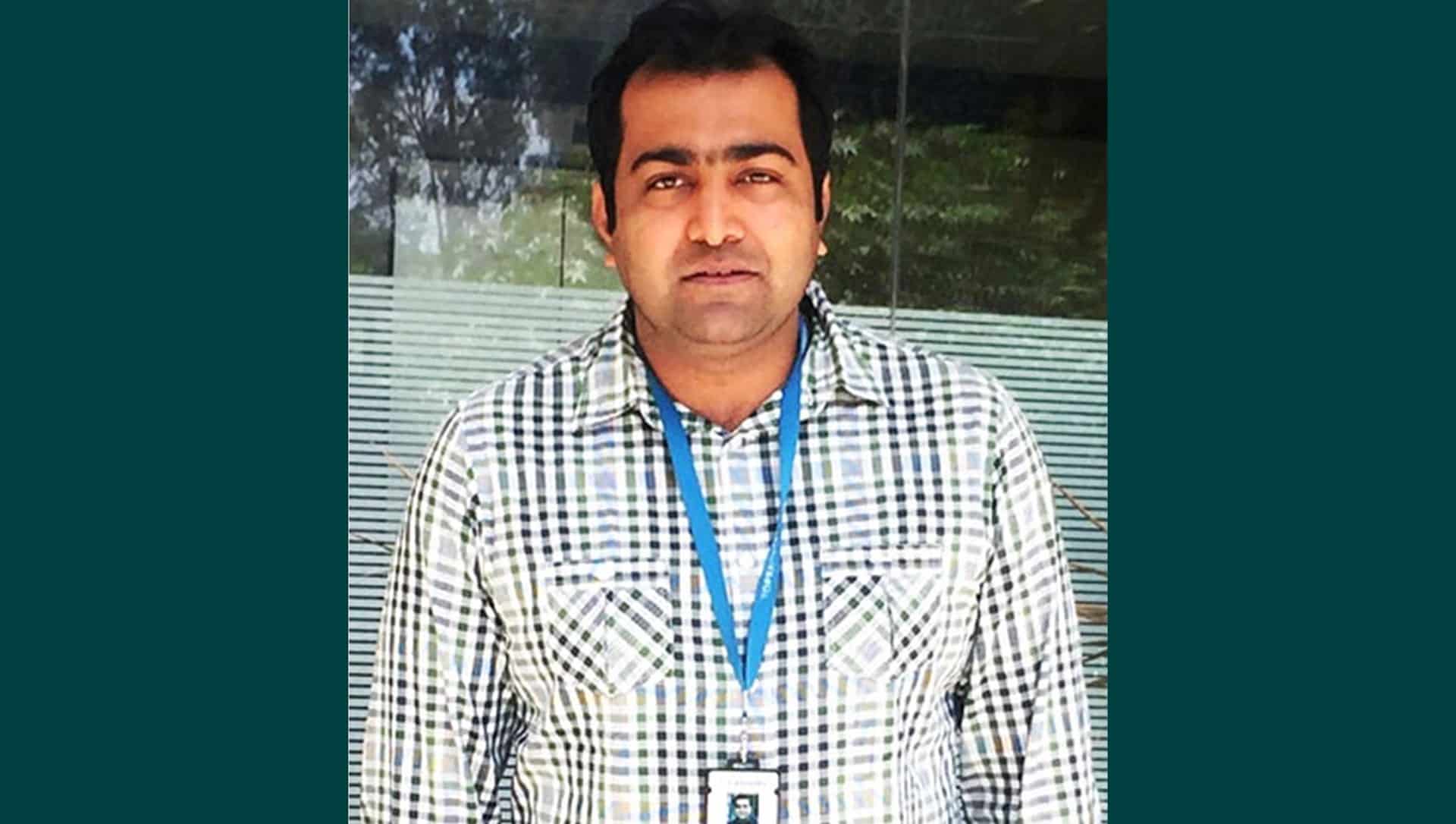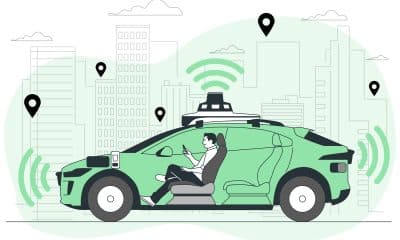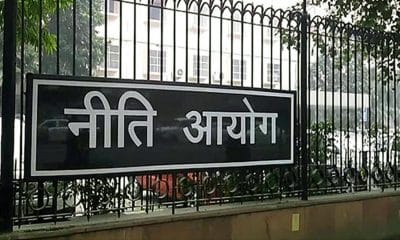In Conversation
How Toprankers emerged as a popular test-prep platform for alternative careers
A good number of students in our country pursue engineering and medical despite their lack of interest. And when they fail to make any headway, then they decide to look for other career options , says Gaurav Goel, CEO and co-founder of Toprankers, adding that the idea behind launching this platform was to aide students who aspire to make alternative career choices. One of India’s leading online test preparation platform, Toprankers helps students in their preparation journey for a career in law, architecture, design and management.
In an interaction with Plunge Daily, Mr Goel shares his journey and tells us about the emergence of Toprankers as a popular test preparation platform for alternative careers in India
1) It’s been around six years since you launched Toprankers. Please take us through your journey. How you came up with this idea and how the platform has evolved over years.
We launched this platform in 2015. Around this time, a lot of competitive exams were moving to online mode. So, one of the ideas behind starting Toprankers was that if exams are being conducted in online mode, soon the learning process would also shift towards digital medium. So, we decided to create a comprehensive platform for careers beyond medical and engineering. Our aim was to create a complete learning ecosystem with mock tests, proper career guidance and discovery. We started with the test series and then launched our video products, live online programs from different domains. As of today, we have about 5 million users on the platform and sold close to 250,000 products with a turnover of USD 3 million. WE are among the few edtech platforms in the country which are profitable.
2) There has been a massive digitisation in the country over the last few years. How do you see the landscape of competitive exams changing especially in view of the digital revolution?
When this digital shift was happening in around 2015, many players entered this segment expecting it to be a supplement ecosystem where students will study offline and take exams in online mode. Then, it gradually moved to a point where students studied offline with a digital adoption for supplement learning along with the online tests. And students have completely shifted to online mode. So, If we talk about our current results for CLAT- out of top 2000 students, 750 were from Toprankers. So, every second student in national law schools comes from Toprankers. So, we are catering to niche categories including CLAT, IP MAT, NID, NEFT among others. Market leaders are not keen on these categories because students pursuing these courses have a very specific kind of need. And if you look at the numbers, the total number of engineers who are writing the exam is reducing while the total number of students opting for these kinds of careers have increased.
3) Competitive exam market is worth billions of dollars in India and there are a lot of players in the field. If I were to ask you three key things that make your products stand out from the market, what will be your response?
Two of my co-founders, Karan Mehta and Harsh Gagrani, come from the offline coaching domain and I have been running an online ecosystem. So, we have a good understanding of both the ecosystems and we run a programme which is more hybrid in nature. So, ours is just not an online coaching, we provide an online-offline hybrid learning program. Then, we have an academic pedagogy which is very close to an offline culture. You will have a mentor or teacher who will be tracking your progress, if you are missing the class, your mentor will call you back to explain your absence. Additionally, you will have the advantages of an online ecosystem which is convenience, affordability, personalization. In an online system, your coaching can be hyper personalized- we can easily track your strong points, speed, accuracy and where you are lacking. So, we are leveraging an online ecosystem within pedagogy of offline set up.
4) Please tell us about overall annual enrollment at your platform (B2C) and success rate of the candidates. Also tell us, if you are running any scholarship schemes for underprivileged students or for promising students.
A) We are getting close to 15,000 students this year. In our online coaching program, we have sold close to another 25,000 test series which takes total enrollment to 40,000 students. At Toprankers, we offer LegalEdge program for law aspirants, Creative Edge program for NIFT and NATA aspirants, SuperGrads program for exams like DUJAT, IPMAT CUCET aspirants and Judiciary Gold program for those want to pursue a career in judiciary. These are the four brands we own. We also run a program called Udaan for students who come from economically weaker background. As part of this initiative, We created a batch called Super 30 where we teach underprivileged students for free and help them become successful. And we run these batches for all the four products owned by us including LegalEdge, SuperGrads, Creative Edge and Judiciary Gold.
5) There are lots of gaps in our education ecosystem right from the primary level. What’s being taught in our colleges are not in sync with what is being demanded by the industry. How do you see this issue?
There are two ways of looking at it. The first approach is the college curriculum versus the industry requirement. And a lot of players are trying to address the issue, We are approaching this issue in a different manner. I believe the skill gap is largely due to the interest level of our students. Suppose, a student wants to become a computer science engineer but has to settle for electronics due to lack of options . The probability of that person getting involved in the course and perceiving it to a level where he becomes successful is much lower as compared to those who pursue a programme they are genuinely interested in. Though efforts are on to bridge this gap by improving curriculum and introduction of new education policy. What we are doing is plain and simple: we are sending the right kid to the right college.
6) Covid pandemic has been a major disruptor in the market. But it also turned out to be a massive opportunity for many startups. Please share with us the challenges and opportunities that came along with Covid.
As I mentioned, our pedagogy of teaching is largely driven from an offline ecosystem, which means that we don’t allow our teachers to teach from home because we want them to come to our classroom, we have set up about 15 Studios in Bhopal where our academic team sits, our tech and marketing team sits in Bangalore. So, when the lockdown happened, we had studios in our offices which got closed. So, we acted swiftly and set up studios in different containment zones where our teachers were staying.
But yes, it turned out to be a massive opportunity for us. We have grown over 300% during the last year. And surprisingly, this year too we are seeing 2.5X growth despite the waning impact of the pandemic. We have realised that students who were once least interested in digital adoption are now trusting the online ecosystem. If you look at the pre-pandemic era, 85% of the students were in the offline ecosystem, an industry worth $7 billion, and only 15% were online. If not for pandemic, the digital shift from 15 % to 60-70% would have taken at least five to six years. But post pandemic, more students are willing to join online platforms, because they have seen the benefits of this ecosystem.
7) Let’s suppose that the pandemic ends in a year or two. Don’t you think students who are using online platforms at present, may go back to offline mode?
In the last one year, students must have realised the benefits of the online ecosystem but yes, they can still go to offline mode. As I mentioned earlier, we are offering a hybrid classroom model to students. So, we are using a pedagogy called flipped classroom. According to this, any concept teaching can be done online but the practise has to happen offline. Because, your doubts would mostly come up while solving problems. So, we are setting up centres all across the country.
Also Read: This edtech platform is helping college students make right career choices
For offline hybrid classes, we opened our first centre in Indore, the second one in Jabalpur. So, the student takes up an online class where he is taught important concepts by our star teacher and the practise happens at our offline centres. So if a student has any doubt, a teacher will be there to clear it. This hybrid ecosystem will cover other aspects like socialising and mentoring as well. Besides, it will also help students combat digital fatigue.
8) You also have a good presence in tier two cities. So, how are you planning to expand your footprint in the country?
We have an aggressive expansion plan for tier two and tier three cities, because we already have a massive audience coming from these cities. With cheaper data prices, there are no issues in terms of internet connection in remote areas as well. So, we’re setting up small centers in these cities to advise students on right career choices and help them prepare for competitive exams.
9) Please tell us about your funding, investors who are supporting your journey.
In terms of investment, it has been a rollercoaster ride for us. We had raised close to $1.9 million from three investors but during the pandemic they just gave up on us and told us that we couldn’t support you anymore. So, we had to buy back from all these investors and put our own money in the company. So right now, all three of us (founders) own 100% of the company. But yes we are going for a fundraise and looking to raise between USD 5 mn to USD 10 mn.












































Pingback: This former World Bank exec is pioneering a silent-revolution in India's education system